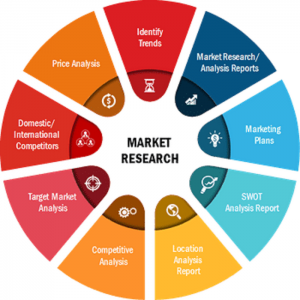The NGA wants to tap into “all avenues of commercial innovation”
2 min readThe use of geospatial data and satellite imagery to comprehend events on Earth has historically provided the US with a significant intelligence advantage. According to the National Geospatial-Intelligence Agency member, that lead is now eroding, requiring the US to step up its game. In a keynote at the 2021 GEOINT Symposium, Cindy Daniell, NGA’s director of research, said, “Over the past few years, the globe has begun to face seismic shifts in its threat and technical environment, placing our decision advantage at danger.”
The National Geospatial-Intelligence Agency (NGA) is a US intelligence agency that analyses geospatial data to aid the US military, allies, and homeland security agencies. According to Daniell, NGA is now focusing on speeding innovation by collaborating more extensively with the private industry and making it much easier for geospatial technology companies to conduct business with the agency.
“We’ll need to broaden our collaborations with all sources of commercial innovation,” she said. “They are no lesser innovative than their larger rivals,” said Daniell, “but may not have the requisite knowledge to navigate the federal procurement system or develop a much deeper understanding of the problem set and technological demands.”
A business accelerator program centered in St. Louis, where NGA is establishing a $1.7 billion facility known as NGA West, is among the most recent projects. Unclassified workspaces are being integrated within the new building to promote collaboration with commercial enterprises and colleges. In July, the NGA established the “Moonshot Labs,” a commercial-style workspace downtown St. Louis. The first batch of startups was chosen in April, as well as the second group of 8 startups for the second accelerator was recently released.
“This allows the government to train nontraditional solution providers, evaluate novel commercial solutions to certain geospatial problems, and develop and promote the geospatial innovation base all at the same time,” she explained. According to Daniell, data analytics innovation is a high priority. “We must make use of artificial intelligence advancements, particularly machine learning.”
Another project focuses on how the NGA writes broad area announcements (BAA) for the industry. The “Boosting Innovative GEOINT Research BAA” was issued in February, and it spells out areas of interest as a “level entry point for all of the industry,” according to Daniell. “We’re working to make working with us easier for businesses.”
The NGA’s phrase for conveying a sense of urgency is “moonshot.” Vice Adm. Robert Sharp, Director of the National Geospatial-Intelligence Agency, launched the moonshot program to emphasize that the US is engaged in the geospatial intelligence arms race that requires a concentrated effort to win. For decades, the United States has been the overwhelmingly dominating geospatial intelligence force, but that fact is fast-changing, according to Daniell.

